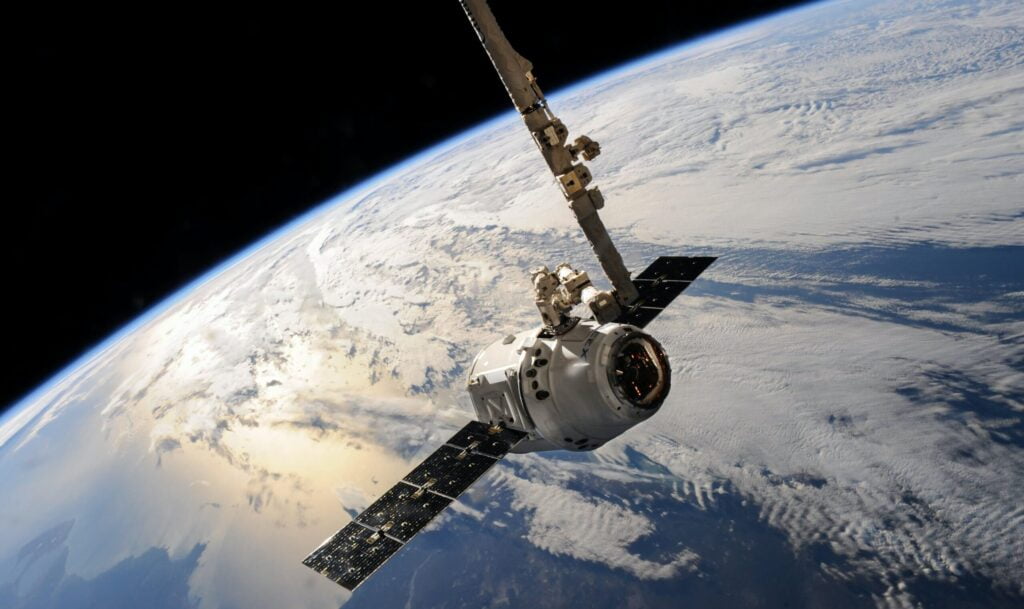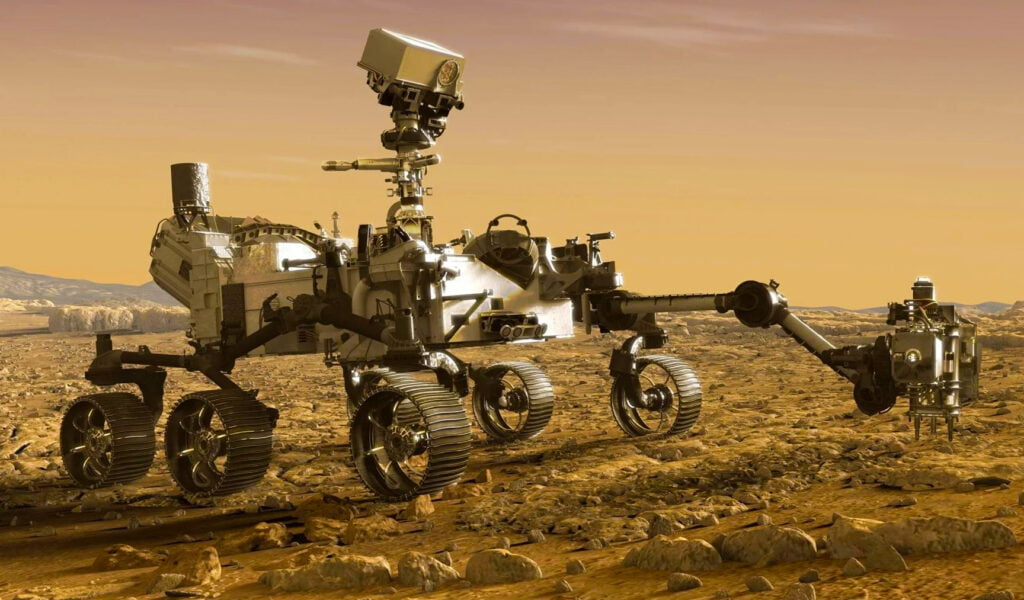Technological growth of Science in 20th century has been phenomenal in transforming human lives. From groundbreaking discoveries in physics like the Albert Einstein’s groundbreaking theories of relativity, to medicine breakthroughs like Alexander Fleming’s discovery of the world’s first antibiotic, to various revolutionary innovations in communication and transportation, the last century witnessed a scientific renaissance that reshaped human civilization.
The contributions of science to humanity in the last century have been transformative and far-reaching, touching every aspect of our lives. From medical breakthroughs that have saved countless lives to technological innovations that have connected the world, the impact of scientific progress is immeasurable.
Medical Breakthroughs
In-depth understanding of human body has been made possible in this period which marked an unparalleled era in medical breakthroughs that revolutionized the understanding, diagnosis, and treatment of diseases. From the discovery of antibiotics to the decoding of the human genome, the century unfolds a plethora of medical advancements that continue to shape the landscape of healthcare today, too.
1. Discovery of Antibiotics: Penicillin (1928): Sir Alexander Fleming’s accidentally discovered penicillin in 1928 marked a monumental breakthrough in medicine. This antibiotic, derived from the mold Penicillium, has revolutionized the treatment of bacterial infections. This medicines widespread use during World War II saved countless lives, underscoring the transformative power of antibiotics in combating infectious diseases.
2. Vaccines and Immunization: Polio Vaccine (1955): Developed by Dr. Jonas Salk, the polio vaccine stands as a testimony to the potential benefits of vaccines in preventing devastating diseases. The successful introduction of the polio vaccine in 1955 marked a turning point in the fight against this dangerously crippling disease common in children, leading to its eventual near-eradication through widespread immunization campaigns throughout the world.
3. Human Genome Project (2003): The Human Genome Project was an international collaborative effort, which culminated in 2003 with the mapping of the entire human genome. This phenomenal achievement opened new avenues for personalized medicine, allowing healthcare professionals to introduce tailor-made treatments based on an individual’s genetic makeup. It paved the way for advancements in understanding genetic factors underlying various diseases amongst living beings and developing targeted therapies.
4. Organ Transplantation: First Successful Kidney Transplant (1954): The pioneering work of Dr. Joseph Murray in 1954 marked the first successful kidney transplant between identical twins. Subsequent advancements in immunosuppressive medications broadened and opened the scope of organ transplantations, offering hope to patients suffering from end-stage organ failure.
5. Cardiovascular Innovations: Coronary Bypass Surgery (1960s): The development of coronary bypass surgery by Dr. René Favaloro in the 1960s revolutionized the treatment of coronary artery disease. This surgical technique involves rerouting blood flow around blocked arteries through an artificial heart-lung machine, mending the damaged arteries & tissues and then restoring the blood supply to the heart.
6. Antiretroviral Therapy for HIV/AIDS (1990): The 20th century witnessed the emergence of the HIV/AIDS pandemic, creating a global health crisis. The development of antiretroviral therapy (ART) in the 1990s transformed HIV/AIDS from a fatal diagnosis to a manageable chronic condition.
7. Diagnostic Imaging: Magnetic Resonance Imaging (MRI): The invention of the MRI in the 1970s by Dr. Raymond Damadian was a game changer in diagnostic technology. MRI provides detailed images of internal structures without ionizing radiation, allowing for the non-invasive detection and characterization of a wide range of medical conditions, from neurological disorders to musculoskeletal injuries. Radio waves used in this imaging can record in-depth intricate views unlike any other imaging techniques.
8. Stem Cell Research: Pluripotent Stem Cells (2006): Shinya Yamanaka’s discovery of induced pluripotent stem cells (iPSCs) in 2006 marked a transformative moment in regenerative medicine. iPSCs have the potential to develop into any cell type in the body, offering new avenues for repairing damaged tissues and organs. This breakthrough holds promise for treating conditions such as various injuries and degenerative diseases like- Alzheimer’s, Cardiovascular issues, Cancers, Arthritis etc.

9. Precision Medicine: Targeted Cancer Therapies: Advancements in molecular biology and genetics have led the way for precision medicine, where treatments are tailored to the specific genetic characteristics of a patient’s cancer. Targeted therapies, such as chronic myeloid leukemia, gastrointestinal tumors, and other tissue malignancies exemplify the success of this approach.
10. Telemedicine and Digital Health: Remote Patient Monitoring: The century has seen a surge in telemedicine and digital health solutions, allowing for remote patient monitoring, virtual consultations, and even enabling remote robotic surgeries. These technologies have enhanced access to healthcare, especially in remote or underserved areas, and facilitate early intervention and preventive care.
***Read this article :Magical Trends of Health & Fitness in 21st Century***
Technological Revolution and Trends
The advent of electronics with computers and the digital age marked a technological revolution that continues to shape our daily lives. The invention of the transistor in 1947 laid the foundation for modern computing, leading to the development of increasingly powerful and compact electronic devices. The invention of radio receivers & transmitters in the beginning of 20th century opened a plethora of communications possibilities.
The discovery of the internet in the late 20th century revolutionized communication, commerce, and information. This along with others smart electronic gadgets like mobile phones, laptops & tablets etc. have empowered man with instant access to information and communication.
1. Invention of Wireless Radio: Several pioneers, were attributed to Radio’s development, but Guglielmo Marconi is credited as the key figure for it. In the late 19th and early 20th centuries, he conducted groundbreaking experiments in wireless telegraphy, successfully transmitting signals over long distances without the need for physical wires.
His work culminated in the first transatlantic wireless communication in 1901. Marconi’s wireless telegraph system laid the foundation for a mass communication medium. Over time, innovators and inventors further refined this technology, leading to the widespread use of radio broadcasting for entertainment, news, and communication. The invention of the wireless radio changed global communication, connecting people across vast distances and can be considered as the most revolutionizing technology ever.
2. Birth of Computing: ENIAC (1946): The Electronic Numerical Integrator and Computer (ENIAC) marked the beginning of the computing era. The machine completed in 1946, was the first general-purpose electronic digital computing device. This massive machine laid the foundation for subsequent advancements in computing technology, that paved the way for the development of smaller, more powerful computers.
3. Transistors and Microelectronics: Invention of the Transistor (1947): A pivotal moment in electronics was commenced in 1947 with the invention of the transistor by physicists John Bardeen, Walter Brattain, and William Shockley. Transistors replaced bulky and energy inefficient vacuum tubes, enabling the creation of smaller and more reliable electronic devices. This breakthrough laid the groundwork for the development of microelectronics, leading to the miniaturization of electronic components and the birth of the modern semiconductor industry.

4. Digital Revolution: Personal Computers (1970s): The 1970s saw the rise of PC’s or personal computers, with pioneers like Apple and Microsoft introducing affordable and user-friendly machines. The accessibility of personal computing standardized information processing, empowering individuals and businesses alike. It marked a fundamental shift from centralized mainframe computing to decentralized computing power at individuals’ fingertips.
5. Internet and Connectivity: ARPANET (1969): The development of the Advanced Research Projects Agency Network (ARPANET) in 1969 laid the foundation for the internet. This interconnected network of computers facilitated communication and data exchange, evolving into the internet which we use today. The internet revolutionized information access, communication, and commerce, connecting people across the globe.
6. Mobile Revolution: The invention of the mobile phone is attributed to an engineer at Motorola, Martin Cooper, who made the first handheld mobile phone call on April 3, 1973. Cooper’s phone, known as the Motorola DynaTAC 8000x, weighed around 2.2 pounds and had a battery life of about 20 minutes. This groundbreaking device marked the beginning of mobile telecommunications, leading the way for the development of smaller, more portable phones over the subsequent decades.
7. E-commerce and Online Platforms: The rise of e-commerce platforms, by the founding of Amazon in 1994, transformed the retail landscape. Online shopping brought convenience by a vast selection of products, and streamlined delivery processes. Various E-commerce platforms not only reshaped consumer behavior but also revolutionized supply chain logistics and business models.
8. A.I. & Deep machine Learning Algorithms: Advances in Artificial Intelligence and machine learning, particularly deep learning algorithms, have revolutionized data analysis, image recognition, and natural language processing. Applications ranging from virtual personal assistants to medical diagnostics, to education and content generation, all demonstrate the immense potential of AI in various domains today. 
9. Biotechnology and Genetic Engineering: CRISPR-Cas9 (2012): The development of CRISPR-Cas9 gene-editing technology marked a massive breakthrough in genetic engineering. This tool allows precise modification of DNA, holding immense potential for treating genetic diseases and enhancing agricultural practices. The crossroads of latest available technology and biology is driving innovations with far-reaching implications for medicine and beyond, creating better food resources and life expectancy.
10. Blockchain and Cryptocurrencies: Bitcoin (2009): Blockchain, a decentralized ledger, offering an efficient way to manage and verify digital transactions across a network of computers. It operates on a consensus mechanism, ensuring transparency, immutability, which is 100% tamper-free. The introduction of Bitcoin in 2009 marked the inception of blockchain technology. The true identity of its developer remains unknown, conceptualized by an individual or group of individuals using the pseudonym “Satoshi Nakamoto “.
Air and Space Exploration
The century culminated with supersonic flight and the advent of modern air travel, and high-tech military aviation symbolizing the remarkable progress and innovation that defined the flying-science in the 20th century.
The exploration of space stands as a testament to human curiosity and scientific achievement. Beyond the symbolic significance, space exploration has provided us with valuable insights into the universe, expanded our understanding of celestial bodies, and spurred technological developments.

Technological Achievements in Air Travel
- Wright Brothers’ First Powered Flight (1903): Orville and Wilbur Wright, known as the ‘Wright Brothers’, achieved the first powered, controlled, and sustained flight on December 17, 1903, near Kitty Hawk, North Carolina. This momentous event marked the beginning of modern aviation.
- Charles Lindbergh’s Transatlantic Flight (1927): Charles Lindbergh’s solo nonstop transatlantic flight from New York to Paris in 1927 aboard the Spirit of St. Louis demonstrated the feasibility of long-distance air travel and brought him to international fame.
- Jet Propulsion and Commercial Aviation (1940s-1950s): The evolution of jet engines in the 1940s and 1950s revolutionized aviation, enabling faster and efficient air travel. Commercial jetliners like the Boeing 707 (1958) and the Douglas DC-8 (1958) ushered in the era of mass transcontinental and intercontinental flights.
- Supersonic Flight (Concorde, 1969-2003): The Concorde, a supersonic passenger airliner, entered service in 1976. It had a cruising speed which exceeded Mach 2, significantly reduced transatlantic flight times. Despite its eventual retirement in 2003, the Concorde remains an icon of aviation engineering.
- Advancements in Aircraft Design (Boeing 747, 1969): The introduction of the Boeing 747, also known as the “Jumbo Jet,” in 1969 marked a big milestone in aviation industry . With its distinctive hump, the 747 became a symbol of long-haul air travel, offering unparalleled passenger capacity.
- Digital Revolution in Cockpit Technology: The introduction of digital technology in cockpit systems, including fly-by-wire controls and advanced avionics, has enhanced aircraft safety, navigation, and efficiency. Modern aircraft, such as the Airbus A380 and Boeing 787, showcase the integration of cutting-edge digital automation systems.
- Rise of Low-Cost Carriers (2000s): The emergence and proliferation of low-cost carriers (LCCs) in the 21st century, such as Southwest Airlines, Ryanair, and AirAsia, have facilitated air travel, making it more accessible to a broader segment of the population.
- Development of Electric and Sustainable Aviation: Ongoing research and development in electric and sustainable aviation aim to reduce the environmental impact of air travel. Projects like the E-Fan X and the development of hybrid-electric and all-electric aircraft demonstrate a commitment to more sustainable aviation solutions.
Achievements in Space Exploration
- The Space Race (1957-1975): Sputnik 1 (1957): The launch of Sputnik 1 by the Soviet Union in 1957 marked the beginning of the space age. It was the first artificial satellite, triggering the intense space race between the United States and the Soviet Union. This competition spurred rapid advancements in space technology.
- The Apollo Moon Landings (1969-1972): Apollo 11 (1969): The historic Apollo 11 mission saw humans landing on the moon for the first time. Astronauts Neil Armstrong and Buzz Aldrin became the first and second humans to set foot on the lunar surface, a monumental achievement that showcased the potential of human space exploration.

- Space Shuttle Program (1981-2011): Space Shuttle Columbia (1981): The launch of the Space Shuttle Columbia marked the beginning of the Space Shuttle program. These reusable spacecraft played a crucial role in deploying satellites, conducting scientific experiments, and assembling and servicing the International Space Station (ISS).
- International Space Station (ISS): Launch of Zarya Module (1998): The ISS, a collaborative effort involving multiple countries, represents a pinnacle of international cooperation in space exploration. The launch of the Zarya module marked the start of ISS construction, creating a microgravity laboratory for scientific research and fostering international partnerships.
- Mars Rovers: Spirit and Opportunity (2004): NASA’s Mars rovers, Spirit and Opportunity, landed on the Red Planet in 2004. These robotic explorers conducted geological studies, searched for signs of past water, and significantly expanded our understanding of Mars’ history and potential habitability.
- Hubble Space Telescope (1990): Launch of Hubble Space Telescope: Launched in 1990, the Hubble Space Telescope has provided breathtaking images of distant galaxies, nebulae, and celestial phenomena. Beyond its visual appeal, Hubble has been instrumental in advancing our understanding of the universe’s age, expansion, and the existence of dark energy.
- SpaceX and Commercial Spaceflight: Falcon 9 and Crew Dragon (2020): SpaceX, founded by Elon Musk, has been at the forefront of commercial spaceflight. The Falcon 9 rocket and Crew Dragon spacecraft have been pivotal in reducing the cost of space travel and enabling private astronauts to reach the ISS.
- James Webb Space Telescope (2021): This’s a cutting-edge astronomical observatory designed to explore the universe in unprecedented detail. Positioned at the second Lagrange point (L2), it promises to revolutionize our understanding of celestial phenomena, offering enhanced capabilities in infrared observation and capturing the most distant and ancient galaxies. The telescope keeps on captivating scientists with innumerous data of stars, galaxies, nebulae etc.
- Perseverance Rover (2021): Mars Rover Perseverance: Launched in 2020 and landing on Mars in 2021, the Perseverance rover keeps on searching for signs of ancient life, collects rock and soil samples, and test them to transmit back significant data for further research on the red planet.

Environmental Awareness and Conservation
Science has played a crucial role in raising awareness about environmental issues and advocating for sustainable practices for our planets future. Climate science has highlighted the urgent need to address global warming, prompting international initiatives.Steps to curb the carbon footprint worldwide, the renewable energy technologies offer hope for a sustainable future and strive to make a better tomorrow.
- Ozone Layer Protection: The awareness of ozone layer depletion led to international efforts such as the Montreal Protocol (1987), successfully phasing out the production of ozone-depleting substances. This collective action exemplifies how global awareness can drive policies for environmental conservation.
- Climate Change Mitigation: Increased awareness of climate change has spurred initiatives like the Paris Agreement (2015), where nations commit to limiting global temperature rise. The focus on renewable energy sources, carbon reduction, and sustainable practices reflects a collective effort to combat the impacts of climate change.
- Renewable Energy Transition: Growing environmental consciousness has accelerated the transition to renewable energy sources like solar and wind power. Advances in technology and increased public awareness are driving a shift away from fossil fuels, promoting cleaner alternatives. Solar panels and Windmills harness sunlight and natural air to generate electricity, offering a economic alternative to traditional fossil fuels.
- Wildlife Conservation and Protection: Environmental awareness has led to the creation of protected areas and wildlife reserves globally. Conservation efforts for endangered species, such as the giant panda in China or the black rhinoceros in Africa, highlight the importance of preserving biodiversity for future generations.
- Plastic Pollution Reduction: Public awareness campaigns have brought attention to the detrimental impact of plastic pollution on oceans and ecosystems. Initiatives to reduce single-use plastics, promote recycling, and clean up plastic waste illustrate a growing commitment to tackling this environmental challenge.
- Deforestation and Reforestation Efforts: Awareness about the consequences of deforestation has prompted global initiatives to combat forest loss. Reforestation projects, such as the Trillion Trees Campaign, aim to counterbalance deforestation, emphasizing the critical role of forests in carbon sequestration and biodiversity conservation.
- Environmental Education Programs: Institutions and organizations worldwide are implementing environmental education programs to foster awareness and understanding of ecological issues. These programs equip individuals with the knowledge and skills needed to make informed decisions for sustainable living.
- Water Conservation Initiatives: Growing concerns about water scarcity have led to widespread water conservation efforts. From efficient irrigation practices in agriculture to water-saving technologies in urban areas, initiatives aim to address the sustainable use of water resources.
- Green Building Practices: The construction industry is adopting green building practices, emphasizing energy efficiency, sustainable materials, and eco-friendly design. Awareness of the environmental impact of buildings has led to the development of certifications like LEED (Leadership in Energy and Environmental Design).
- Sustainable Agriculture: Increased awareness of the environmental impact of conventional agriculture has driven a shift towards sustainable farming practices. Agroecology, organic farming, and precision agriculture are examples of approaches that prioritize environmental conservation in food production.
- Citizen Science Initiatives: Environmental awareness is bolstered by citizen science projects where individuals actively contribute to data collection and monitoring efforts. Projects like bird counting, air quality monitoring, and water testing engage communities in environmental stewardship.
- Circular Economy Practices: The concept of a circular economy, where resources are reused, recycled, and minimized, is gaining traction. Businesses and consumers are increasingly embracing practices that reduce waste and promote a more sustainable and regenerative economic model.
Quantum Physics Technological Advancements
The 20th century witnessed groundbreaking advancements in physics that reshaped our understanding of the universe. Albert Einstein’s theory of relativity revolutionized our concepts of space and time, while quantum mechanics brought about a paradigm shift in our understanding of the fundamental building blocks of matter. Quantum mechanics emerged as a revolutionary theory to describe the behavior of particles at the atomic and subatomic levels.
Pioneered by scientists like Max Planck, Niels Bohr, and Erwin Schrödinger, Heisenberg, Higgs, Bose etc. introduced principles explaining electron behavior and natures of subatomic particles. The development of technologies like lasers, MRI machines, and nuclear power exemplifies how these theoretical breakthroughs in physics have practical applications that benefit society.
In summary, the 20th century marked an extraordinary era in physics, witnessing the formulation and consolidation of theories that govern the universe at both macroscopic and microscopic scales. The legacy of these advancements continues to shape scientific inquiry, technological innovations, and our perception of the cosmos in the 21st century.
As now, 21st century progresses, the legacy of these achievements serves as a foundation for addressing new challenges and unlocking further potentials for the betterment of humanity. Science continues to be a driving force, guiding us toward a future where innovation and discovery enhance the human experience and address the pressing issues of our time. Human species should use it wisely as a tool for constant development, preserving our moral values, and maintaining the delicate balance for sustainable growth & protection of our earth.
Read this article on the same subject: https://www.americanscientist.org/article/the-origins-of-20th-century-progress







Touche. Solid arguments. Keep up the golod work. https://www.waste-ndc.pro/community/profile/tressa79906983/
Thanks for sharing. I read many of your blog posts, cool, your blog is very good.